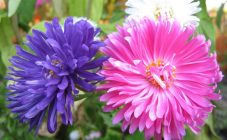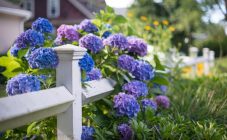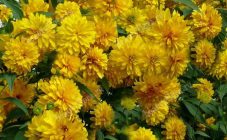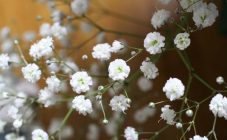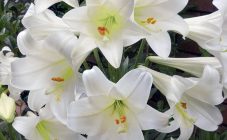Content:
Among the order of a thousand species, ever-flowering begonia enjoys a special attitude - charming in its simplicity, feeling great on a windowsill, balcony, street lawn or flower bed. Often, lovers of indoor flowers, having accidentally received a sprout of an unpretentious plant, imbued with its charm, become the owners of an extensive collection.
Ever-flowering begonia - what is this plant
In Latin, the species is called Begonia Semperflorens (translation - "always blooms"). Its main advantage is the extraordinary duration of flowering. If the necessary conditions are maintained, it blooms all year round, without the need for rest. There are other names of the species - evergreen begonia, always flowering, constantly flowering.
An exquisite ornamental plant has a very valuable quality - it disinfects the air of residential and office premises, cleans from harmful fumes from synthetic materials - finishing materials used in the manufacture of furniture and interior items.
The flower sap causes irritation of the skin and mucous membranes, and if swallowed - nausea, vomiting, diarrhea, but the flower leaves are used as a home medicinal plant, primarily for bruises, sprains.
Plant characteristic
The always blooming begonia according to the description is a herbaceous perennial with decorative flowers. The sizes are small - tall varieties barely exceed the mark of 50 cm, the smallest ones form neat bushes only 8-10 cm high. The leaves of the plant are solid, simple, green, green-burgundy, bronze flowers with gloss. Simple or double flowers are painted in white, pink, coral, red tones.
By the type of pollination, the species is cross-pollinated. Each bush forms flowers of different sexes, differing in the number of petals: 4 in the male, 5 in the female. The pollen ripens before the pistil is ready to receive it.
Types and varieties of ever-flowering begonia
This species in the natural environment and decorative floriculture is represented by subspecies: elegant begonia (gracilis), Schmidt, Lanchiana.
Of over 600 varieties, terry ever-flowering begonias are considered the most charming. Externally, the male flowers of double varieties are similar to miniature roses of various colors - from white to thick crimson or deep red, and the petals with a wavy border give the bush an airiness and tenderness.
The dwarf begonia Semperflorence Queen (queen) is especially loved. The variety series includes cultivars Rose, Pink, Red, White (soft pink, pink, red, white). Queen is ideal for horticultural cultivation, as it exhibits high resistance to all weather conditions.
Features of planting and care
Begonia is rightly considered an unpretentious plant. Having created the necessary conditions, they enjoy its home flowering all year round:
- lighting - soft, diffused, northeast or northwest directions of windows are preferred;
- the duration of daylight hours is 16 hours, i.e. the autumn-winter period requires additional lighting of the plant;
- optimum humidity is about 60%;
- they take garden soil, slightly acidic or neutral, add vermiculite or perlite to it, or acquire a special one for begonias;
- a pot for growing is selected according to the criteria: each plant needs at least 10 sq. cm of area, not very deep, any material, but the container should be as stable as possible;
- the optimal temperature regime is from 20 to 25 ° С all year round.
Planting and caring for ever-flowering begonias at home is very simple:
- the stalk or seedling is placed in a hole, covered with a substrate;
- watering is moderate, after the top layer of the substrate has dried. To maintain the desired humidity, a small container of water is placed next to it;
- dressing is applied every two weeks. Use mineral complexes for flowering plants or special ones.
Transplant the plant with obvious signs of strongly overgrown roots. In reality, semperflorence is aging quickly, usually, instead of transplanting, flower growers cut a bush and replant it.
Growing a flower in open ground has features associated with the inability to maintain the necessary conditions in the flower garden in winter. Therefore, as a street plant, the species is grown as an annual plant, resuming planting every spring.
Begonia is planted on garden beds, borders, flower beds when the night frosts are behind, in late May and early June. A semi-shaded place is chosen for her: with a lack of light, it stretches out, blooms poorly, and constant exposure to the sun causes leaf burns. The soil is prepared loose, breathable. If necessary, add structuring additives to it. Drainage is required.
They look after the garden in the same way as at home. Water regularly, but in moderation, in the morning or evening. Warm water is poured under the root. Top dressing is applied monthly.
Diseases of ever-flowering begonia
With proper care, the plant rarely gets sick. The most common disease is root rot caused by excessive watering. They are treated with watering with fungicides - Fitosporin, Speed. In advanced cases, the bush is completely removed from the pot, all rotten parts are removed, the remaining roots are disinfected with a pale pink solution of potassium permanganate, and planted in new soil.
Less commonly, flowers get sick with powdery mildew, which also appears due to waterlogging. The leaves are carefully treated with fungicides, severely affected are cut off, watering is regulated.
Breeding methods of evergreen begonia
For reproduction, cuttings are usually used - apical or stem. They are prepared at any time of the year, usually when transplanting. They root well directly in the ground or in water.
Reproduction by leaves is no less effective than cuttings, the optimal time is August. Rooting is carried out in a nutrient substrate under the film.
Less commonly, the seed method is used. The seeds are sown in February without burying them. The grains are very small, for convenience they are mixed with sand or sown on a snow "blanket". They dive at the two-leaf stage. Seedlings are planted from May, after the establishment of stable warm weather.
Unpretentious graceful evergreen begonia serves as a good decoration for the interior of an apartment or office. Using a combination of leaves and flowers of various colors, they create extraordinary compositions on flower beds, decorate garden paths.



